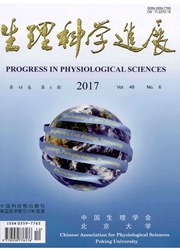

 中文摘要:
中文摘要:
树突状细胞(DC)是最强效的抗原提呈细胞。,在抗原的刺激下,DC通过趋化因子作用由外周组织迁移至淋巴组织和器官,同时上调主要组织相容性复合体分子、共刺激分子和黏附分子的表达,分泌细胞因子,获得预激幼稚T细胞的独特能力。DC通过不同的受体吞饮、吞噬和胞吞抗原,例如C型凝集素受体捕获和呈递抗原,通过Toll样受体识别病原体和激活DC。本文主要综述了DC的免疫调节效应及其不同病原体识别受体活化和细胞内信号机制。
 英文摘要:
英文摘要:
Dendritic cells (DCs) are highly efficient antigen-presenting ceils (APC). Following antigen stimulating, DC could migrate from peripheral tissues to lymphoid organs via chemotactic factors and upregulate major histocompatibility complex, costimulatory molecules, adhesion molecules, secreting cytokines, acquiring the unique capacity to prime naive T cells. DC takes up antigen through phagocytosis, pinocytosis, and endocytosis via different groups of receptor families, such as C-type lectin receptors (CLRs) for antigen capture and presentation, Toll-like receptors (TLRs) for pathogen recognition and DC activation. The present review focuses on the progress of DC biology as well as immunoregulation, activation via distinct pathogen recognition receptors and intracellular signal transduction pathway.
 同期刊论文项目
同期刊论文项目
 同项目期刊论文
同项目期刊论文
 期刊信息
期刊信息
